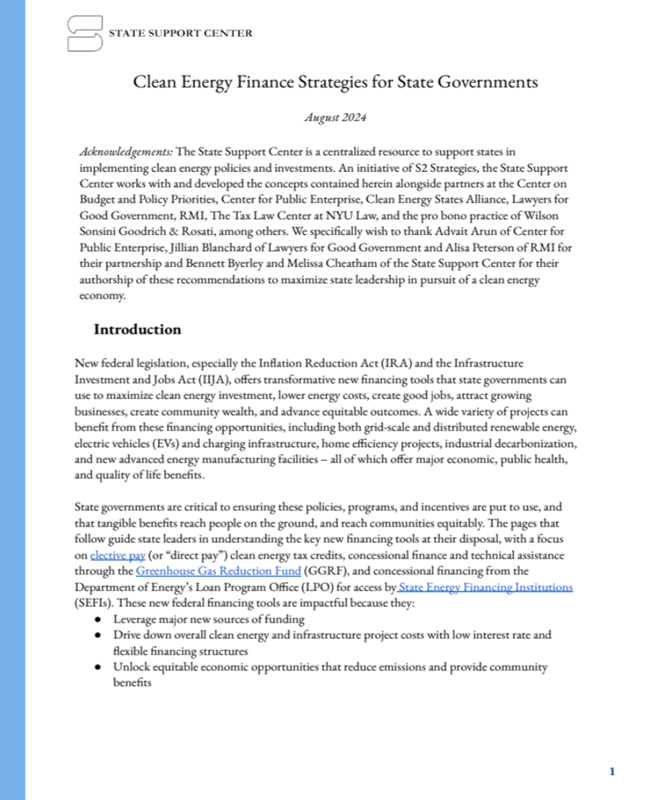New federal legislation, especially the Inflation Reduction Act (IRA) and the Infrastructure Investment and Jobs Act (IIJA), offers transformative new financing tools that state governments can use to maximize clean energy investment, lower energy costs, create good jobs, attract growing businesses, create community wealth, and advance equitable outcomes. A wide variety of projects can benefit from these financing opportunities, including both grid-scale and distributed renewable energy, electric vehicles (EVs) and charging infrastructure, home efficiency projects, industrial decarbonization, and new advanced energy manufacturing facilities – all of which offer major economic, public health, and quality of life benefits.
State governments are critical to ensuring these policies, programs, and incentives are put to use, and that tangible benefits reach people on the ground, and reach communities equitably. The pages that follow guide state leaders in understanding the key new financing tools at their disposal, with a focus on elective pay (or “direct pay”) clean energy tax credits, concessional finance and technical assistance through the Greenhouse Gas Reduction Fund (GGRF), and concessional financing from the Department of Energy’s Loan Program Office (LPO) for access by State Energy Financing Institutions (SEFIs). These new federal financing tools are impactful because they:
- Leverage major new sources of funding
- Drive down overall clean energy and infrastructure project costs with low interest rate and flexible financing structures
- Unlock equitable economic opportunities that reduce emissions and provide community benefits
This memo will introduce each of these financing tools in turn and then provide recommendations for how state government leaders can maximize their use, driving clean energy and economic transformation in their state.
More About this Resource
Publisher: State Support Center
Date: August 12, 2024
Type: Report
Sector(s): All
State(s): Nationwide
